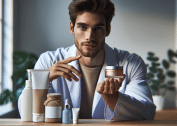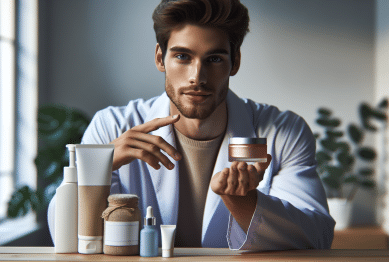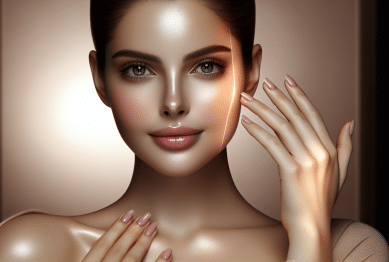Healthy, radiant skin isn’t just about genetics—modern routines and science-backed tips make a difference. Explore effective skincare approaches, ingredient insights, lifestyle tweaks, and wellness connections that empower you to support glowing skin naturally and confidently.
The Science of Skin Radiance
Understanding what contributes to skin radiance goes far beyond quick fixes or trending buzzwords. The skin, as the body’s largest organ, reflects a wide range of internal processes such as hydration, nutrition, and cellular turnover. Skin appearance is heavily influenced by both genetics and your daily habits. Routine exposure to environmental factors—like sunlight, pollution, and stress—can impact the skin barrier, sometimes resulting in dryness, dullness, or sensitivity if left unaddressed. Embracing a science-based skincare routine is one way to encourage your natural glow, while also supporting overall wellness.
A radiant complexion usually signals a healthy skin barrier. This barrier is responsible for retaining moisture, blocking irritants, and maintaining balance in the microbiome. Ingredients such as ceramides, hyaluronic acid, and antioxidants are known for their ability to lock in hydration and combat free radicals. Proper cleansing is just as important as moisturizing, because removing excess oil, sweat, and pollutants prepares the skin to better absorb beneficial ingredients. Consistent routines tailored to individual skin needs across seasons can provide ongoing support for luminous skin.
Scientific research has revealed direct connections between what you put into your body and how your skin looks. Diets rich in antioxidants—like vitamin C, E, and omega-3 fatty acids—are commonly associated with improved skin texture and tone. These nutrients help fight oxidative stress, which is a major factor behind premature aging and the loss of radiance. Experts emphasize the importance of holistic approaches that include both topical and dietary strategies for results that last longer. For everyone interested in unlocking their potential for glowing skin, the science invites a multi-layered approach for sustainable beauty (Source: https://www.ncbi.nlm.nih.gov/pmc/articles/PMC6017965/).
Building a Personalized Skincare Routine
Every skin is unique, which means that the most effective routine is always one that adapts to your skin type and sensitivities. Whether your skin runs dry, oily, combination, or sensitive, the right products and habits matter. Cleansing should be gentle but thorough, ensuring the removal of dirt without disrupting natural oils. Layering hydrating serums or creams, especially those containing hyaluronic acid or glycerin, can help maintain plumpness and softness. Small changes in product order may make a difference, such as applying lighter serums before thicker creams.
Exfoliation is another valuable step—when completed responsibly. Chemical exfoliants, like alpha-hydroxy acids, encourage cell renewal, which can improve texture and brightness. However, over-exfoliation can compromise the skin barrier, resulting in irritation or dryness. Experts recommend limiting exfoliation to a couple of times per week, always following with a nourishing moisturizer and sunscreen. Adding antioxidants in the morning routine may offer added environmental protection, while soothing treatments with ingredients like aloe vera or centella asiatica before bedtime encourage repair as you sleep.
Listening to your skin and evaluating its needs throughout different life stages or climate changes is crucial. Some days, skin might require extra moisture or barrier support, especially after travel or illness. Understanding how to select active ingredients and paying attention to how your skin responds leads to a more intuitive approach. Instead of mimicking someone else’s steps, finding the rituals and products that suit your lifestyle can unlock consistent, confidence-boosting results (Source: https://www.aad.org/public/everyday-care/skin-care-secrets/routine).
The Role of Sun Protection in Lasting Beauty
Sun exposure, while essential for vitamin D synthesis, is also a leading cause of premature aging and pigmentation issues. Ultraviolet (UV) rays can damage skin cells and break down collagen—responsible for firmness and elasticity. Regular use of broad-spectrum sunscreen helps reduce these risks and maintains an even, radiant complexion over time. Experts suggest daily application, even on cloudy days or when indoors near windows, as UVA light can penetrate glass.
Sunscreen options come in various forms—creams, lotions, sprays, sticks—to meet different preferences or lifestyle needs. For sensitive skin, mineral sunscreens containing zinc oxide or titanium dioxide tend to be less irritating and provide effective protection. Some moisturizers and makeup products now contain sun filters, offering multitasking benefits. Layering these throughout the day, especially during extended outdoor activities, reinforces robust protection without overloading the skin with heavy formulas.
Sun awareness extends beyond sunscreen. Wearing hats, sunglasses, and seeking shade during peak sun hours further reduces exposure risk. The American Academy of Dermatology recommends regular skin checks for evolving moles or spots, as sun damage can contribute to skin cancer over time. Combining sun-wise habits with other skin-supportive routines empowers anyone to enjoy the outdoors safely while keeping their beauty goals in reach (Source: https://www.cancer.org/cancer/risk-prevention/sun-safety.html).
Connecting Nutrition with Skin Health
Nutrition is increasingly recognized as a pillar of healthy, glowing skin. Certain nutrients—such as vitamin A for repair, vitamin C for brightness, and biotin for barrier support—play essential roles. Hydration is equally crucial, as water helps flush toxins and keeps the skin supple. Diets with a strong focus on fruits, vegetables, nuts, and fatty fish supply plenty of antioxidants and anti-inflammatory compounds, which can help mitigate environmental stressors.
Some individuals notice improvements in skin clarity or glow after adjusting dietary habits. For example, reducing excess sugar and refined carbohydrates may minimize breakouts or balance sebum production. Fermented foods and probiotics are also appreciated for their positive influence on the gut-skin axis—a connection supported by emerging research. Strengthening digestive health often reflects directly on skin clarity and resilience, making nutrition a central part of holistic beauty routines.
While dietary supplements are sometimes used to fill nutrient gaps, experts recommend aiming for balance through whole foods, as absorption and synergy between vitamins and minerals is often optimal from natural sources. Those considering supplement use should consult healthcare providers for personalized advice. By cultivating food choices that support every layer of wellbeing, you encourage long-term skin vitality and radiance (Source: https://www.hsph.harvard.edu/nutritionsource/vitamins/vitamin-a/).
Mindfulness, Sleep, and Lifestyle Factors
Several lifestyle choices outside of the bathroom cabinet have significant impacts on skin appearance. Chronic stress may trigger inflammation, breakouts, or delays in skin repair, while restorative sleep is linked to better skin tone and elasticity. Prioritizing sleep, managing stress with mindfulness practices, and balancing work with moments of relaxation are foundational steps to wellbeing in every form—including skin wellness.
Simple habits such as gentle exercise or meditation help support circulation and lymphatic drainage, assisting in the delivery of nutrients to skin cells and removal of waste products. Exposure to fresh air, minimizing screen time before bedtime, and creating calming night routines support deeper rest. Sleep is a natural time for skin recovery, so cultivating healthy sleep hygiene delivers both visible and invisible advantages.
Mindfulness can also lessen the urge to pick at imperfections or overuse products, promoting a more intuitive relationship with skincare. Some find that journaling or connecting with nature has calming effects reflected by a peaceful complexion. By extending wellness practices beyond topical care, lasting vibrance and health become more achievable—inside and out (Source: https://www.sleepfoundation.org/physical-health/skin-and-sleep).
Exploring Popular Actives and Trends Carefully
Skincare trends can sometimes feel overwhelming, but exploring them thoughtfully offers the chance to identify new routines that might serve your beauty goals. Popular actives—like retinoids, vitamin C serums, and peptides—are supported by research for their anti-aging and texture-boosting effects. However, layering too many powerful ingredients can increase the risk of irritation, especially for those with sensitive or reactive skin.
Patch testing new products is a simple preventative practice to reduce sensitivity reactions. When adding new treatments, it helps to introduce one product at a time and monitor results for several weeks. Research suggests that consistent, gentle care generally yields superior outcomes versus cycling through multiple trends in search of quick fixes. Working with a board-certified dermatologist can clarify which actives best fit your individual skin profile and minimize potential side effects.
As interest in wellness and beauty grows, so does curiosity about “clean” or eco-conscious offerings. Many users seek formulas with minimal irritants, recycled packaging, or sustainably sourced ingredients. These preferences connect your beauty routine to broader values and can support both skin and environmental health. Staying up to date with credible sources helps demystify ingredient lists and ensures safer choices (Source: https://www.fda.gov/cosmetics/cosmetic-ingredient-names/common-ingredients-found-cosmetics).
References
1. Chilicka, K., & Rogowska, A. M. (2019). Analysis of the effectiveness of skin care procedures and their impact on skin condition. https://www.ncbi.nlm.nih.gov/pmc/articles/PMC6017965/
2. American Academy of Dermatology. (n.d.). Skin care routine: tips for healthy skin. https://www.aad.org/public/everyday-care/skin-care-secrets/routine
3. American Cancer Society. (n.d.). Sun safety. https://www.cancer.org/cancer/risk-prevention/sun-safety.html
4. Harvard T.H. Chan School of Public Health. (n.d.). Vitamin A and carotenoids. https://www.hsph.harvard.edu/nutritionsource/vitamins/vitamin-a/
5. Sleep Foundation. (n.d.). The Relationship Between Skin and Sleep. https://www.sleepfoundation.org/physical-health/skin-and-sleep
6. U.S. Food and Drug Administration. (n.d.). Common ingredients found in cosmetics. https://www.fda.gov/cosmetics/cosmetic-ingredient-names/common-ingredients-found-cosmetics









